Dryburn Limeworks
Since 2017 Charles DAnby & Rob Smith have been meeting with the Lowick Heritage Group to discuss their initiative to restore a nineteenth century lime kiln on the edge of the village. It is the last remaining kiln of the eleven that served four quarries in what was once a major lime producing area in the North East of England.
The proposed restoration forms a complex site that draws together industrial heritage, tourism, rural economies with geological and material processes. It is in this context that this project explores how the Dryburn lime kiln can produce new narratives of the lime industry in relation to the area, be an active part of the composition of this hybrid rural-industrial landscape and generate new futures within it.
Through this community led activity we are developing proposals for micro-industrial lime production on the site of the historic lime kiln, an action that will support the restoration of this culturally significant structure through the production of the mortar required for its repair, development of a skills base that can assist its maintenance and providing a focus for tourism in the village, contributing more widely to its economy.

Archaeological investigations with the Lowick Heritage Group at Dryburn Kiln
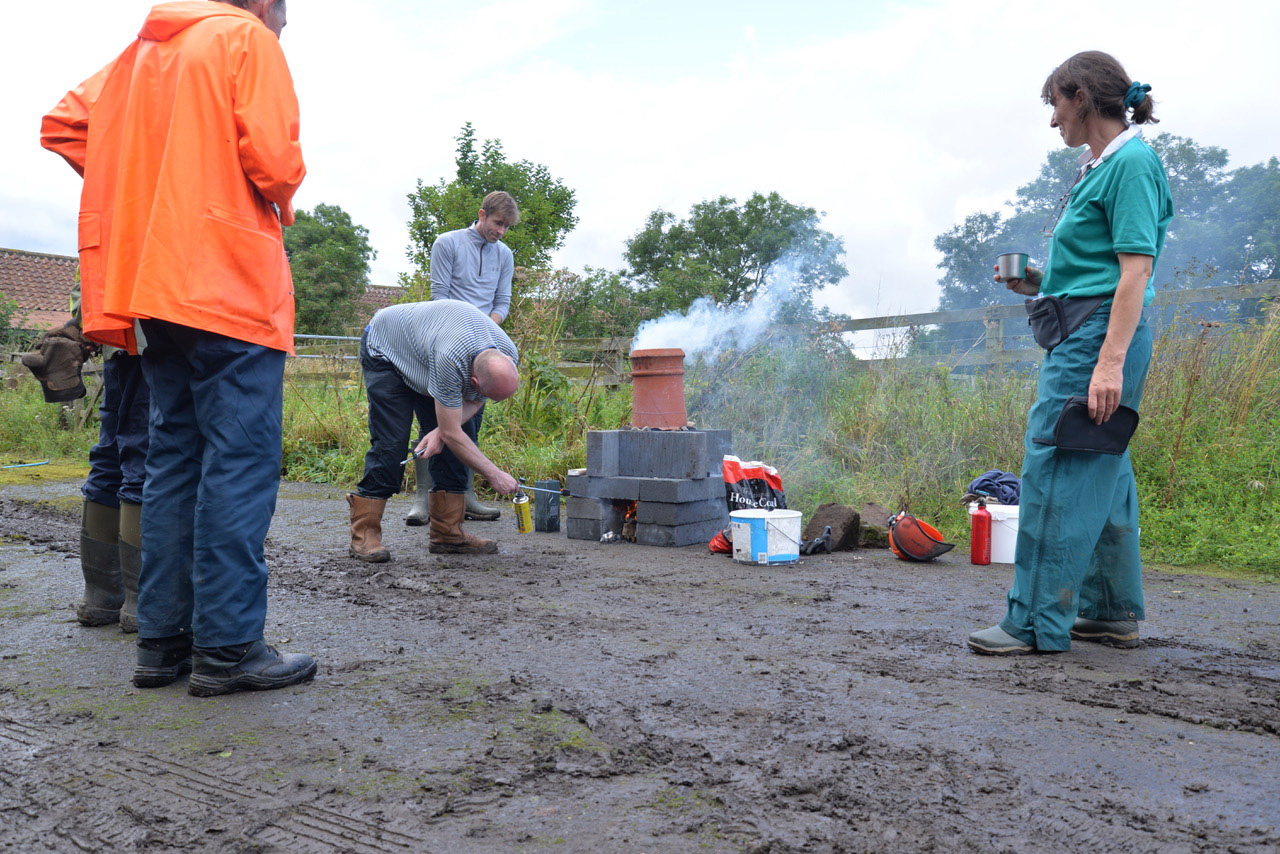
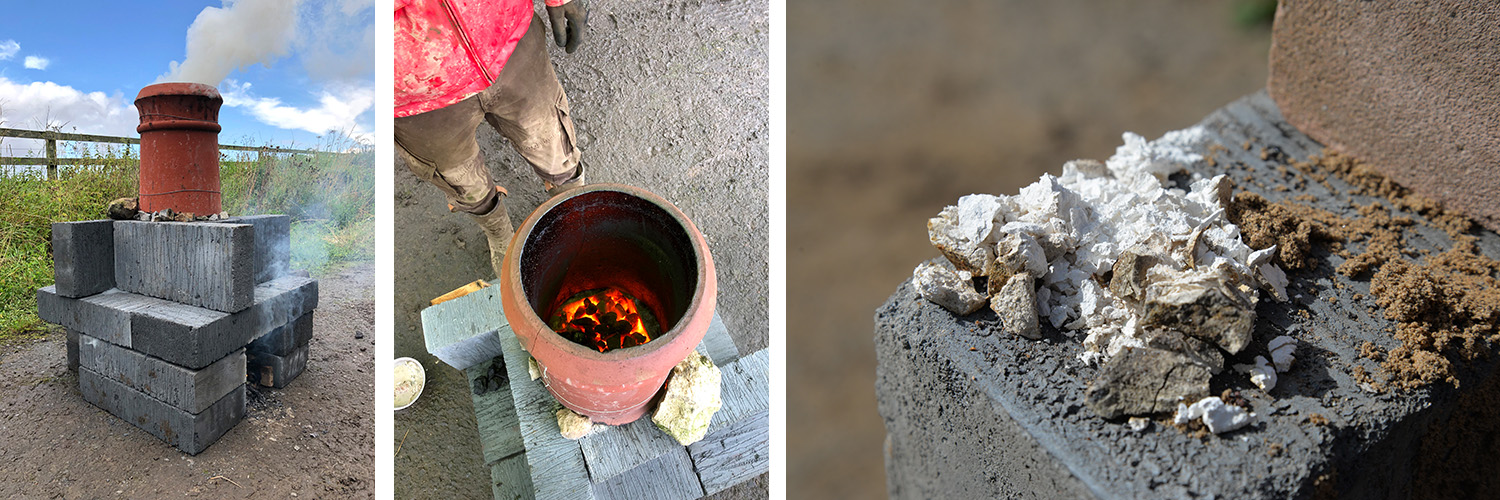
In the summer of 2019 together with the Lowick Heritage Group we made a small scale lime kiln and produced the first quicklime that had been produced in Lowick for 140 years.
Animation of pointcloud produced through photogrametric survey of Dryburn limekiln
Lowick Lime
Exhibition: 20-22 November 2019
Event: Unearthing Lowick Lime 22 November 6-7:30pm
Experimental Studio, Baltic 39, Newcastle
This exhibition emerges from our ongoing engagement with the Lowick Heritage Group and their initiative to restore a nineteenth century lime kiln in the village of Lowick, Northumberland. It expands the historical site of the kiln through the activation of walking routes, ecological and architectural surveys, the micro-industrial production of quicklime, community archaeology, the marking of hidden industrial sites, and archival storytelling. These actions negotiate alternative understandings of what restoration means, consider the contemporary significance of lime in the region and ask how it continues to inform the interrelationships of people with the land.
The exhibition takes the form of an expansive drawing that re-orientates aspects of the geological, social, economic and industrial structures of the village of Lowick, within the space of the Experimental Studio. A floating conical archival structure provides a ‘meeting place’ for publics with ‘tellings’ of Lowick, through objects, materials, scripts and artefacts.
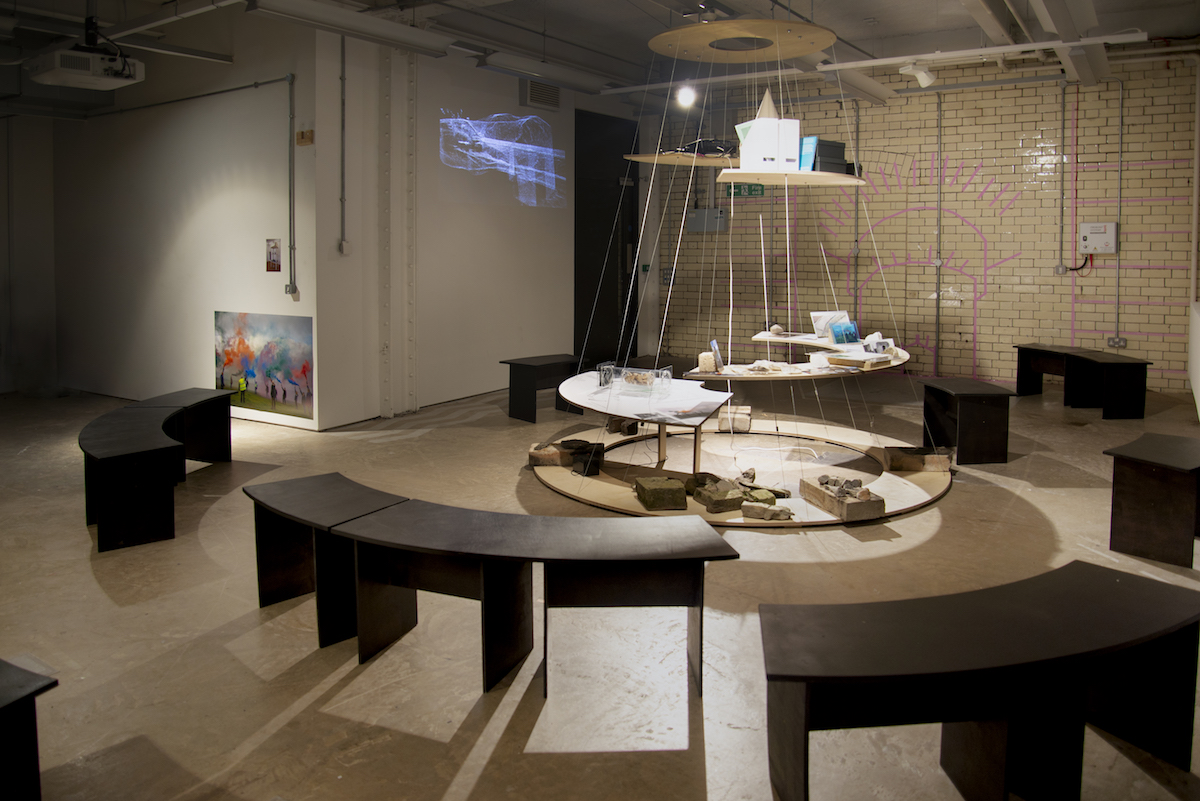
Lowick Lime 2019. Installed at The Experimental Studio, Baltic39, Newcastle.
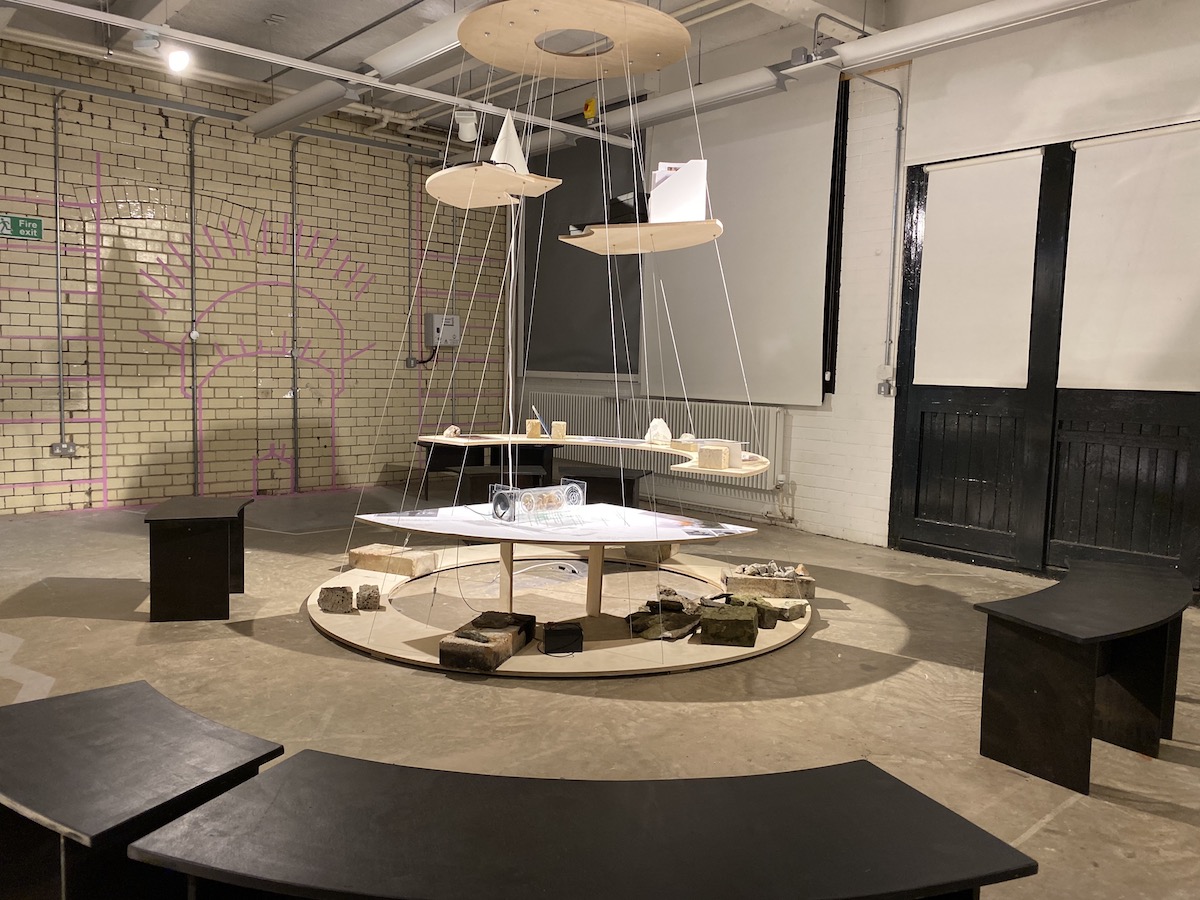
Lowick Lime 2019. Installed at The Experimental Studio, Baltic39, Newcastle.
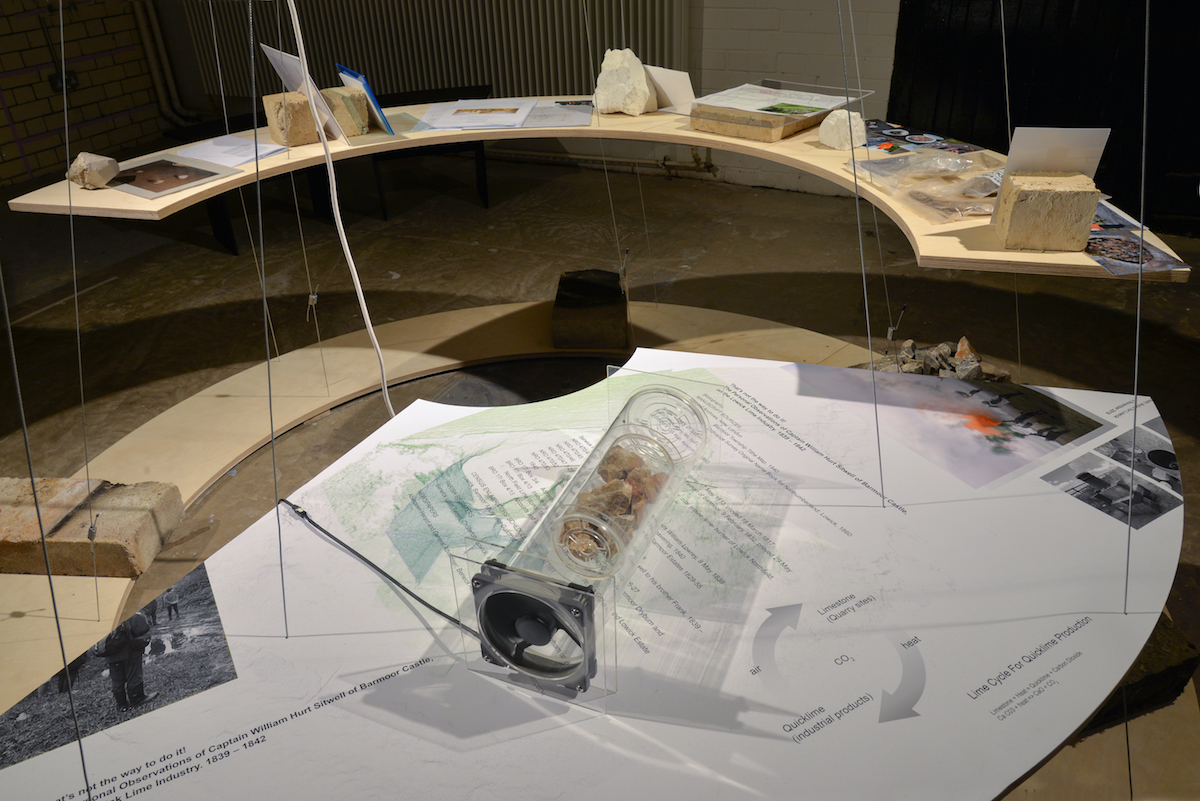
Lowick Lime 2019. Some of the changing selection of objects from the archive presented in the exhibition.
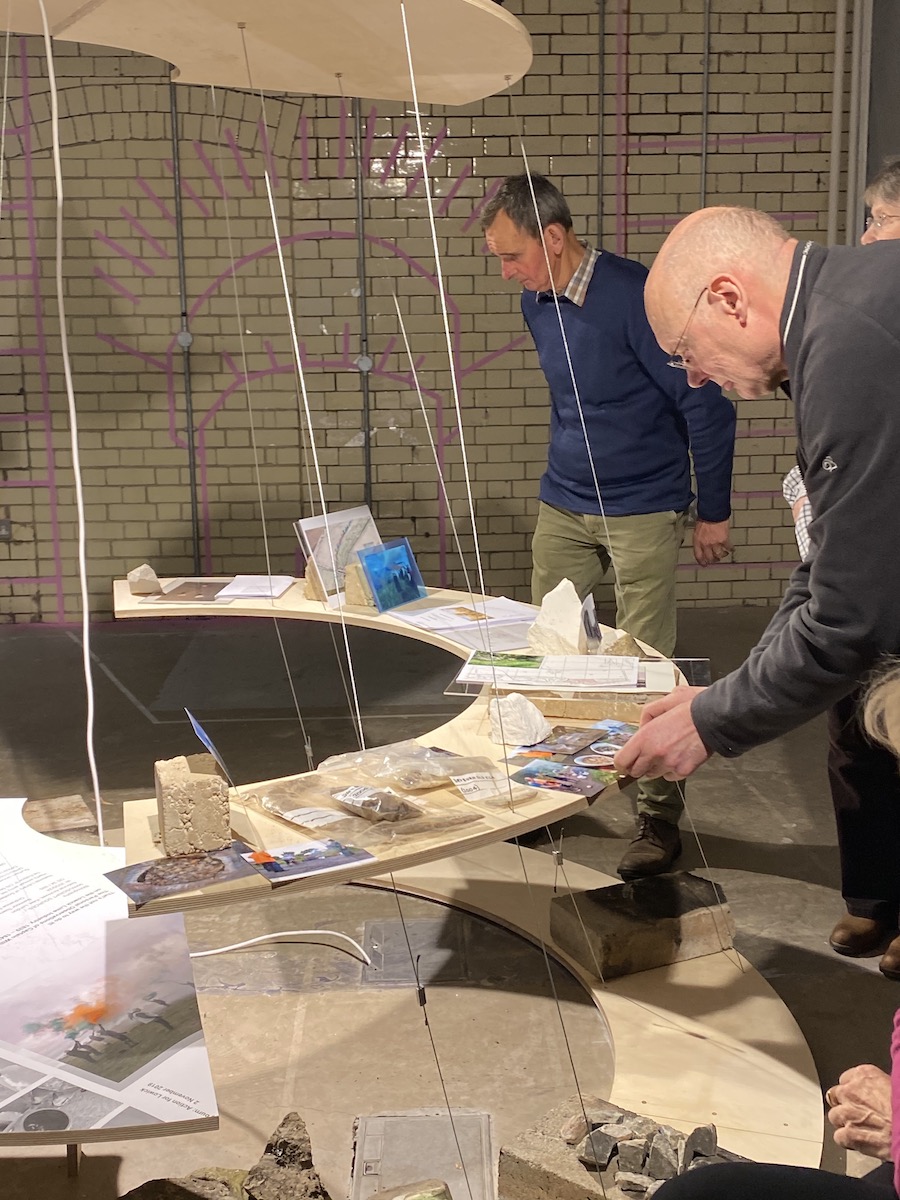
Lowick Lime 2019. Some of the members of Lowick Heritage Group at the exhibition.
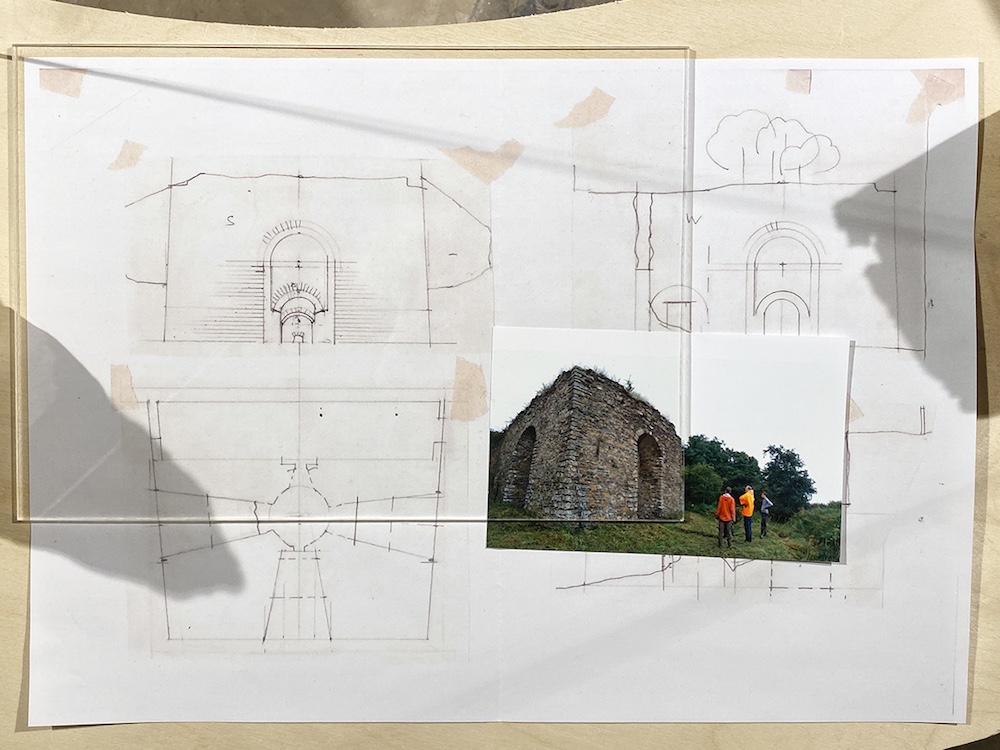
Lowick Lime 2019. Detail of some of the materials on the conical structure
Unearthing Lowick Lime
As part of the Lowick Lime exhibition we hosted an event to ask how a 19th century lime kiln opens new interactions with Lowick’s industrial past, how it forms contemporary meanings for the residents today and provides Lowick with opportunities for new kinds of future-building.
It featured a performed reading of a script by members of the Lowick Heritage Group. The script is the latest in a series written by local historian Julie Gibbs for the people of Lowick, and is the first to be performed and read outside of the village. It is compiled from extensive archival sources that create an exacting storytelling through characters and events from Lowick’s past. This script draws on the conflicting interests surrounding Lowick’s lime industry between 1839 and 1842.
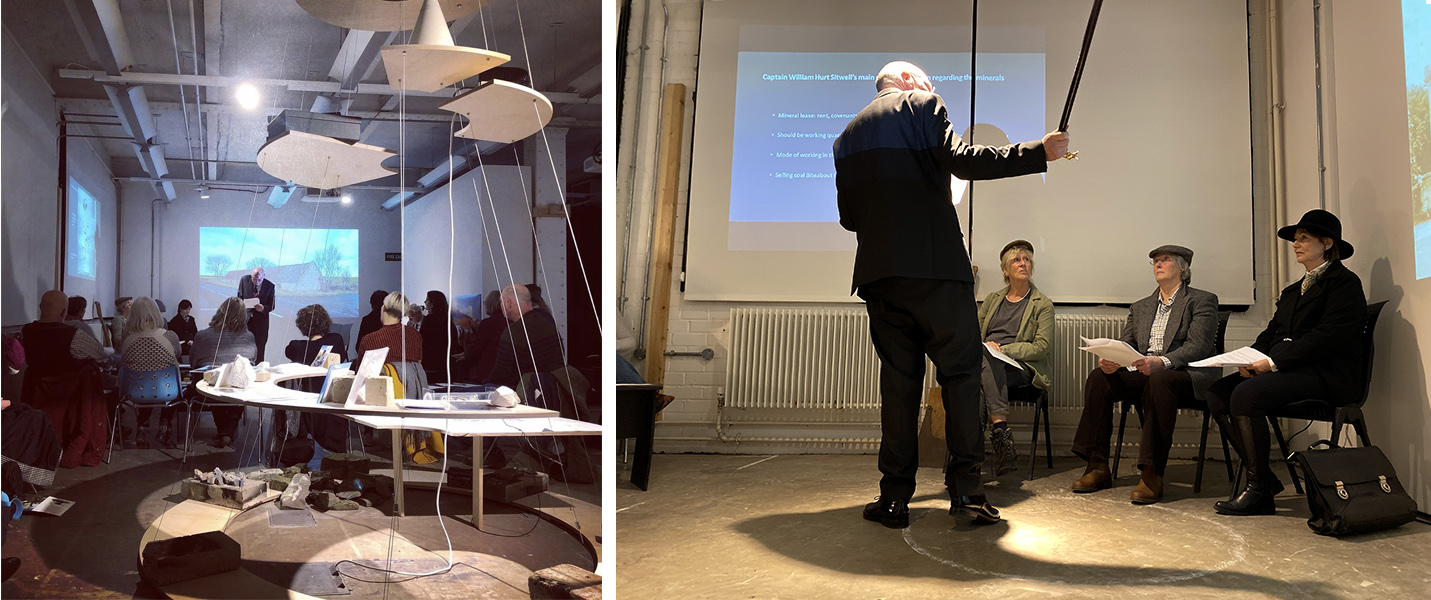
Unearthing Lowick Lime 2019. Members of the Lowick Heritage Group perform the script by Julie Gibbs
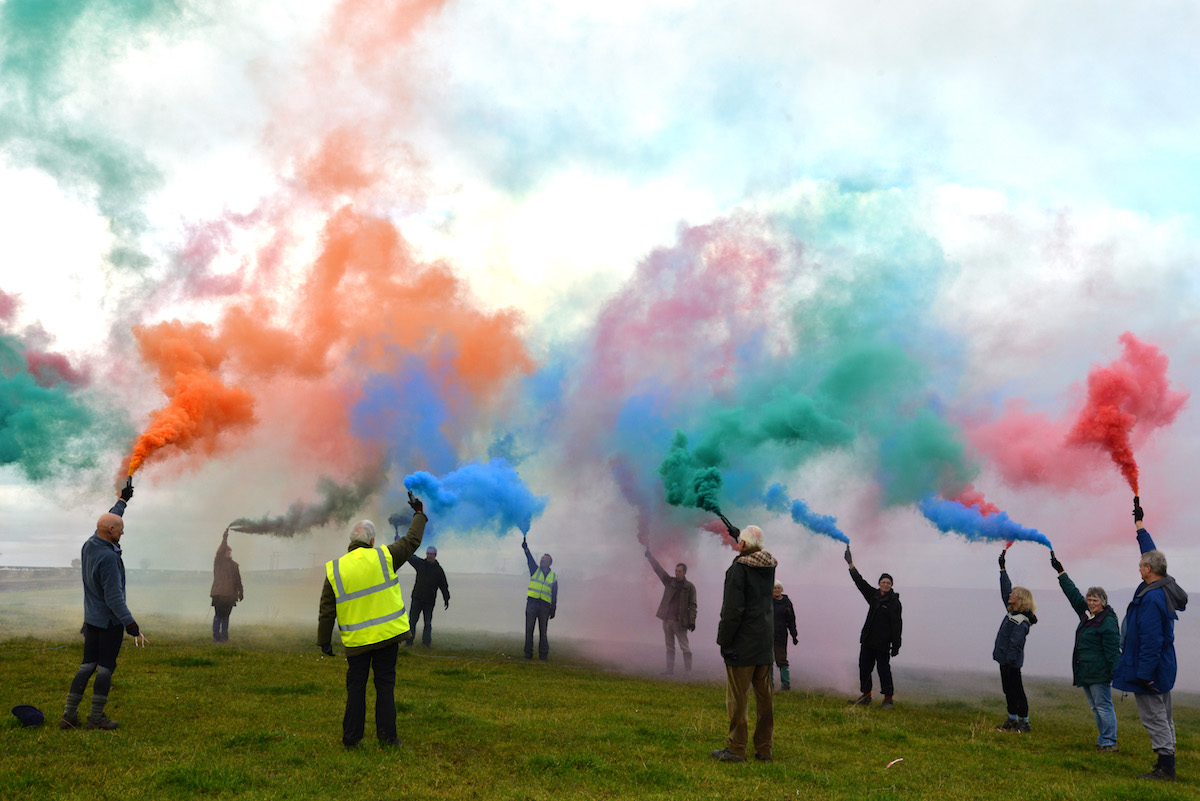
Marking the Dryburn 2019. People gathering to mark the site of the Dryburn Quarry, Lowick Northumberland.
Marking the Dryburn
On the 2 November 2019 a group of people walked from the Black Bull pub in Lowick (the old carting inn) to the site of th Dryburn Lime Kiln and quarry. Once we arrived at the kiln people were invited to take part in an action to make the site visible in the landscape once more. Using signal flares the group reimagined the smoke that the kilns in the area once produced and collectively marked the site of the Dryburn today.
Using the 1860's OS map to navigate the many lime stes in the area, the walk was an opportunity for members of the heritage group who have been working towards a restoration of the kiln to share their experiences and insights, to invite people to visit the kiln and explore the multiple temporalities within the landscape.
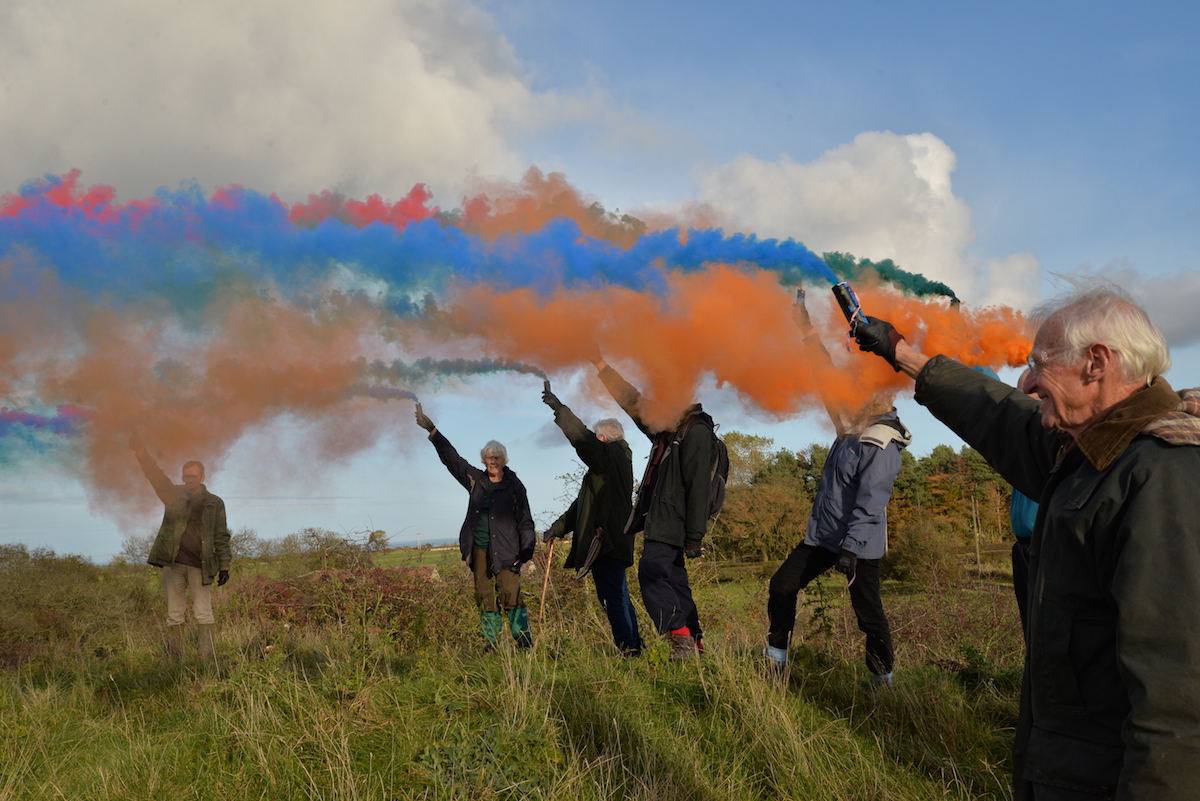
Marking the Dryburn 2019. People gathering to mark the site of the Dryburn Quarry, Lowick Northumberland.
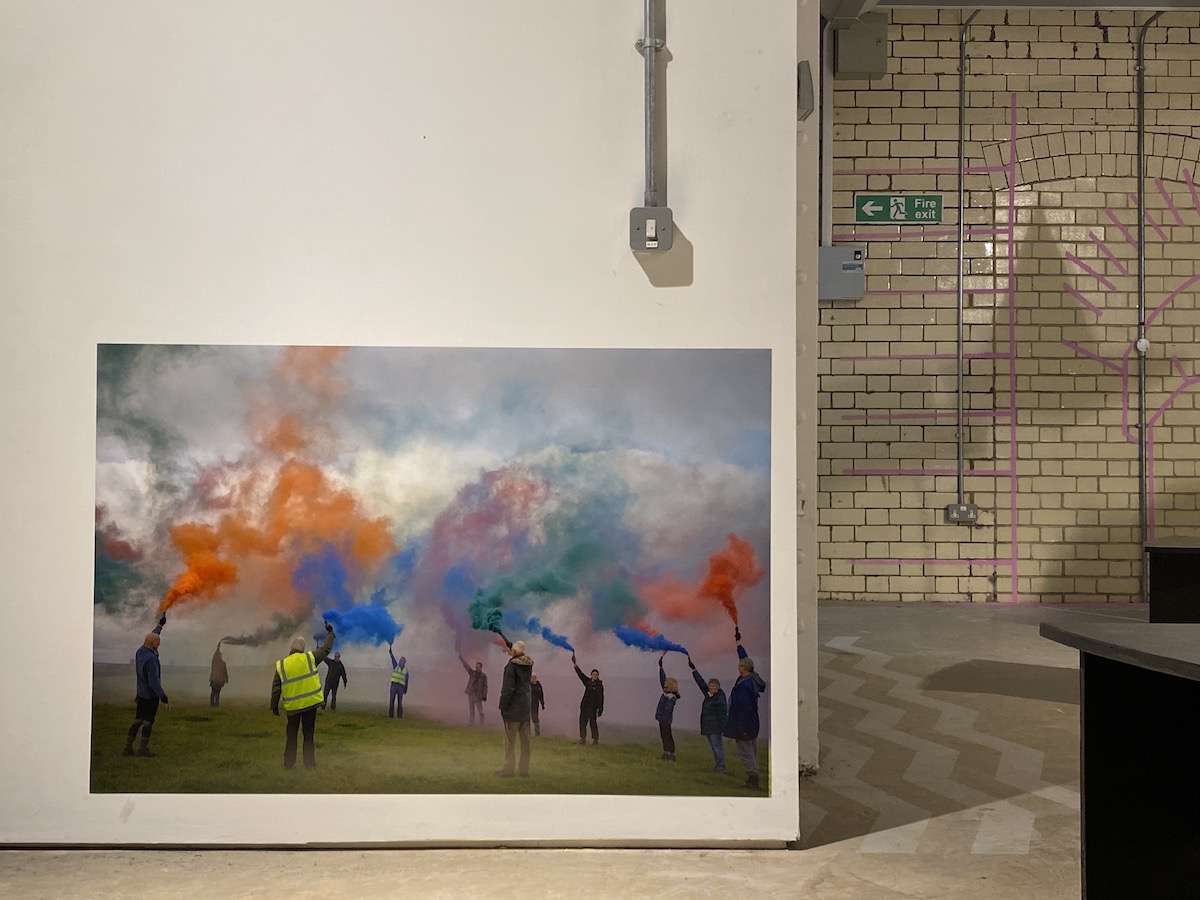
Image installed as part of Lowick Lime, Baltic 39 November 2019
Incidental Breather
The Incidental Breather was developed for and presented at Incidental Assembly, an event hosted by the Incidental Unit to examine the legacies of the Artists Placement Group (APG), Clore Studio, South London Gallery September 2019 and later became an element within Lowick Lime.
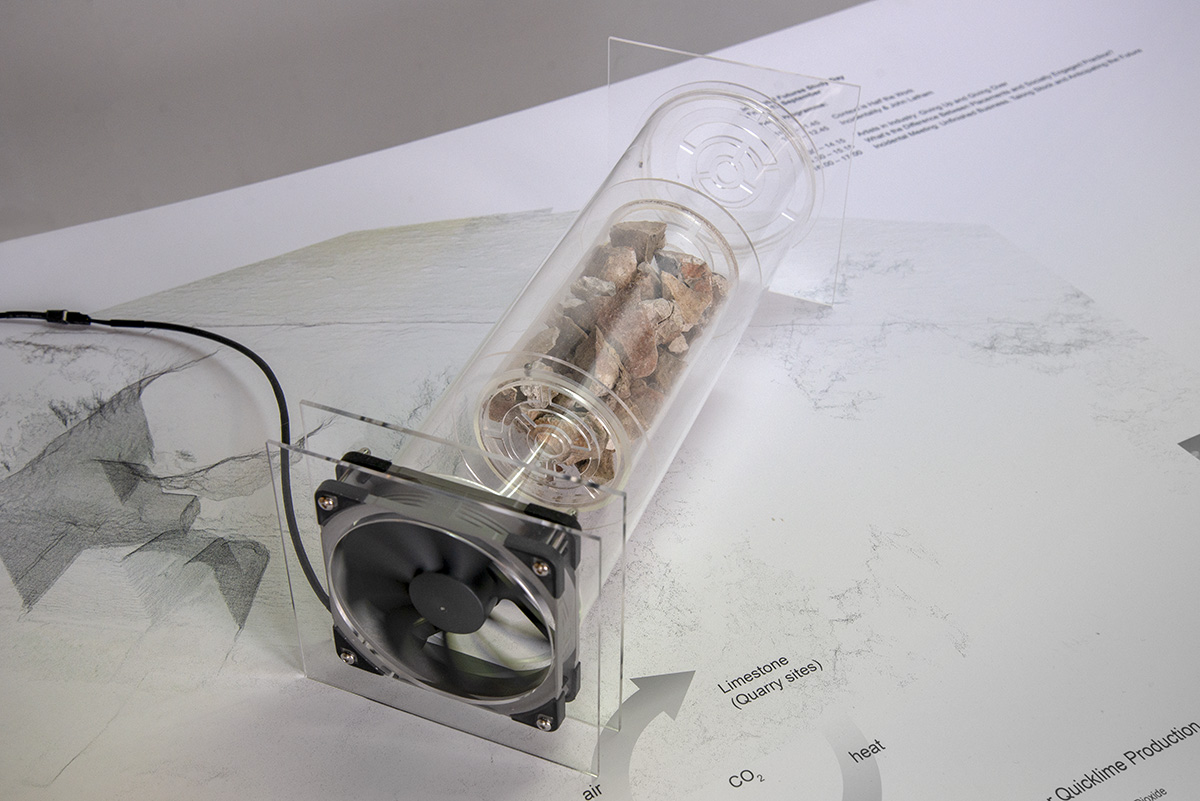
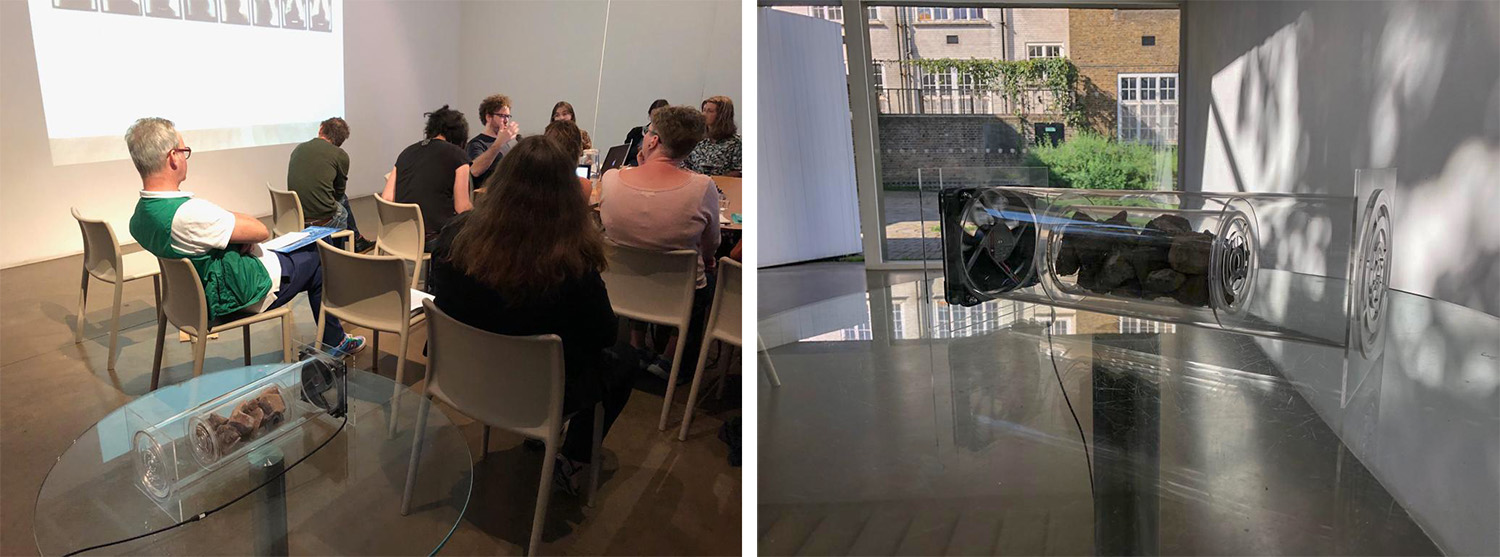
The Incidental Breather deployed at the Incidental Assembly, Clore Studio, South London Gallery September 2019
Proposal:
At the Lime Kiln:
Working with the Lowick Heritage Group limestone will be gathered from the once derelict quarry sites on the edge of the village and transformed into quicklime through the construction of small scale lime kilns. This production of material is the prototype for a new micro-industry of bespoke lime products in this now rural area of Northumberland.
At the incidental assembly:
A vacuum sealed package of Lowick quicklime is opened and the material is placed within the apparatus, the fan is started and air is slowly drawn through it. Quicklime will absorb carbon dioxide from the atmosphere transforming it back into limestone (see lime cycle below). This process will continue for the duration of the assembly, absorbing the exhaled air from the discussions in the room into the lime, chemically changing it, making limes quick materiality a part of the exchange. At the end of the assembly this adjusted quicklime will be resealed in a vacuum as a record of the event.
The apparatus will be accompanied by a multimedia board reporting our engagements with the lime sites in the Lowick area. This along with the apparatus will act as catalyst for the discursive space of the assembly by offering new narratives of the interrelationships between industrial processes and land use and asking how geological temporalities and materials can be accounted for at this tipping point in the ecology of the 21st century.
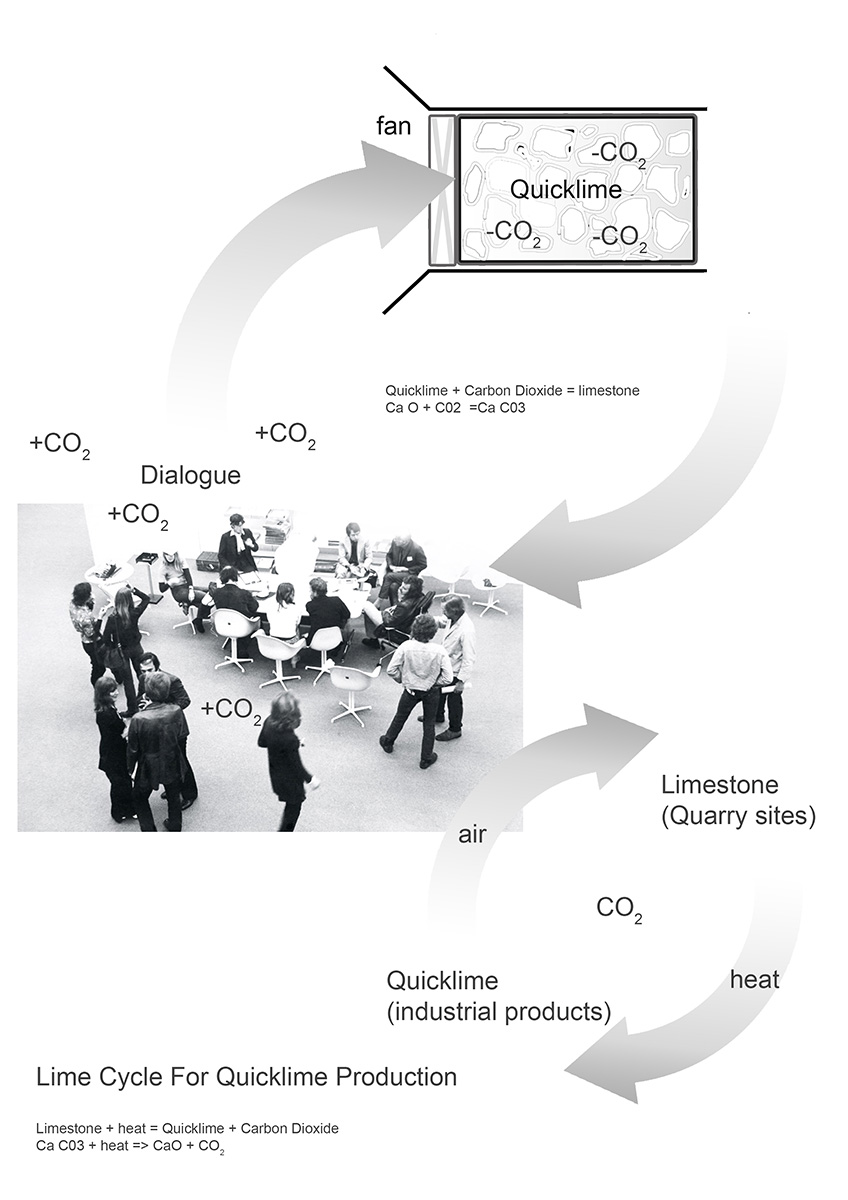
Proposal drawing for Incidental Breather deployed at the Incidental Assembly, Clore Studio, South London Gallery September 2019
Exhibited at:
Incidental Assembly with Incidental Unit, Clore Studio, South London Gallery 2019Lowick Lime Experimental Studio, Baltic39, Newcastle 2019